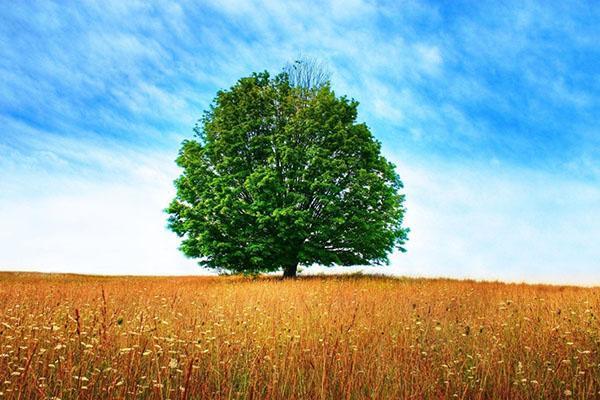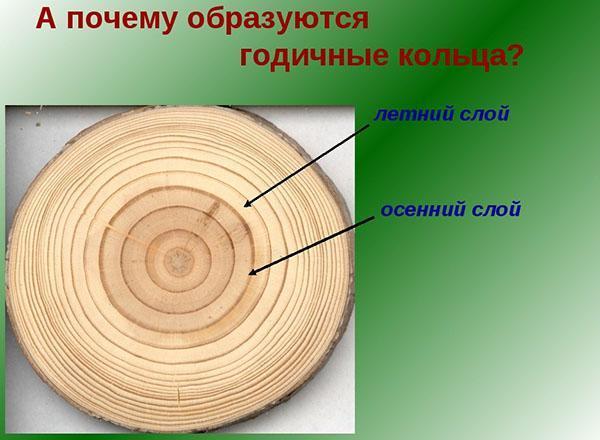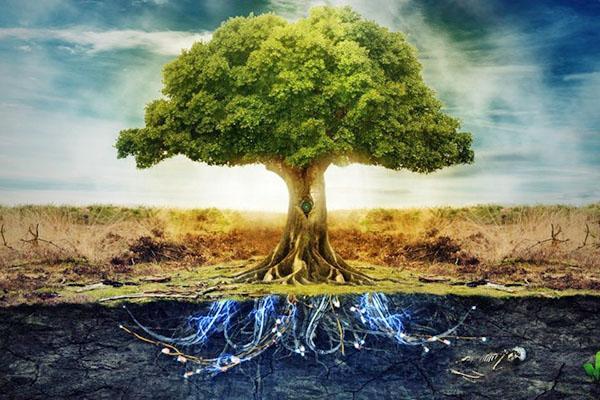Interesting to know - the lifespan of trees
 The lifespan of trees primarily depends on the type and environmental conditions. Most of them live for about a century, but there are also champions who are a thousand years old or more. Of course, we are talking about strong, healthy trees that are in favorable conditions and are not felled by humans.
The lifespan of trees primarily depends on the type and environmental conditions. Most of them live for about a century, but there are also champions who are a thousand years old or more. Of course, we are talking about strong, healthy trees that are in favorable conditions and are not felled by humans.
How do you know the age of a tree?

The expansion of the tree trunk occurs thanks to the cambium, a special tissue that creates living cells inward (towards the center of the trunk) and outward from itself (towards the bark). The cells that are inside the cambium become part of the wood - a supporting system that carries nutrients from the roots to the leaves. The cells located outside the cambium (under the bark) deliver organic matter from the leaves to the roots, this tissue is called bast.
In the spring, the cambium creates wide cells with narrow walls. They are needed for more efficient and faster delivery of nutrients and micronutrients. In autumn, cambium produces narrow cells with thick walls, which give the tree trunk extra strength. Thus, two types of fabrics are produced per year: one layer (spring) is lighter, the other (autumn) layer is much darker.
It is better to determine the number of stripes using a microscope and special dyes, since they are rather narrow. The number of dark and light rings can be used to estimate not only the age of the tree, but also the climatic conditions in which it grew. Broader, darker areas indicate an unfavorable, cold autumn and long winter.
To find out the age of a tree, you need to cut it down. In some cases, this is not possible or desirable.
In such a situation, the method of calculating the average is used. At the level of one and a half meters, the circumference of the trunk (in centimeters) is calculated and divided by the constant π (~ 3.14), in this way the diameter of the tree is found.
This value is divided by the average annual growth for the studied plant species in the region. The result is a rough indication of the tree's lifespan. Of course, this method gives only approximate figures. Moreover, the difference between them and the actual number of years can reach 20-30% or more.
Therefore, the most common way is to cut down the tree and count the number of rings.
What affects the lifespan?
 Before figuring out how old trees live, let's look at what affects their age. Life expectancy is highly dependent on various natural conditions. The most influential factors include:
Before figuring out how old trees live, let's look at what affects their age. Life expectancy is highly dependent on various natural conditions. The most influential factors include:
- Genetic individual capabilities of the plant. At first glance, they are all the same, but in fact, trees vary in the shape and size of the leaves, cambium activity, and other characteristics. All this has a strong influence on the adaptive capabilities of the plant to unfavorable conditions.
- Characteristics of the soil. Its composition, saturation with water, saturation with trace elements and nutrients.On scarce agricultural land, trees can grow poorly, while across the road, on rich, not yet cultivated soil, plants can live for centuries.
- Humidity and temperature have little effect, since the climate in each zone is usually stable over a long period of time. The exception is global weather changes (ice ages). Of course, for short-lived plants, even a slight drought can be fatal.
- The characteristics of the terrain (the presence of a slope, a mountain or large buildings) strongly change the level of illumination, strength, wind direction and other important parameters. And they, in turn, significantly reduce or increase the life of the tree.
- Characteristics of the forest. With a high density of tall trees that grow nearby, the chances for a particular plant to reach significant sizes are rather small. This is also influenced by the species diversity, for example, it is very difficult for a deciduous tree to grow in a dark coniferous forest.
- Diseases and pests. Pests include insects that gnaw on bark and leaves, and animals and arthropods that gnaw on roots. Diseases in trees are bacterial and fungal.
These are the most important natural conditions. But there are also artificial ones. A tree lives less in a highly polluted urban environment. Conversely, life expectancy increases significantly in large parks, where there is no dirt, but there is plant care and protection from pests and diseases.
Deciduous trees
 Interestingly, the life expectancy of wild trees is much higher than that of fruit cultivated plants. This is due to the fact that a person, by the method of selection, created crops that gave maximum yields in the shortest possible time. Such high productivity is directly related to the fact that the tree has little strength and resources for itself, it gives everything to fruits. As a result, much less lives.
Interestingly, the life expectancy of wild trees is much higher than that of fruit cultivated plants. This is due to the fact that a person, by the method of selection, created crops that gave maximum yields in the shortest possible time. Such high productivity is directly related to the fact that the tree has little strength and resources for itself, it gives everything to fruits. As a result, much less lives.
The most common fruit trees in our latitude are apple and pear trees. They live up to half a century maximum, but wild species can grow for 100-150 years. Other crops - plum, sea buckthorn, apricot - live up to 20-30 years. This is due to the fact that these crops are traditionally grown in southern latitudes. For example, a peach in our strip does not live longer than 15 years at all.
All wild deciduous trees grow much longer. Aspen and alder live up to 150 years, walnut trees live on average for 2 centuries. Elm, ash and birch grow up to 3 centuries, while beech lives up to 500 years. But the record holder is the oak - it lives on average for one and a half millennia. Of course, we are talking about the possible life potential of these tree species, since in real modern conditions no one will let them live more than 100-200 years.
Coniferous trees
 Conifers live much longer than deciduous trees. This is due to a lower metabolism, serious adaptability in harsh climatic conditions. The shape of the crown of a coniferous tree allows you to extract the maximum amount of energy that the sun can provide.
Conifers live much longer than deciduous trees. This is due to a lower metabolism, serious adaptability in harsh climatic conditions. The shape of the crown of a coniferous tree allows you to extract the maximum amount of energy that the sun can provide.
The highly branched root system also helps to survive, as well as the fact that even in winter the needles continue to produce nutrients, albeit in minimal quantities. At the same time, the roots, even from the frozen ground, are able to get minerals and water. In this case, the needles are covered with wax, which prevents the water from evaporating.
Fir - the shortest-living plant among conifers, can exist for up to 2 centuries. The spruce tree widespread in our country and Pine live up to 600 years. European larch lives up to 500 years, and its Siberian counterpart - up to 900 years (a clear example of the effect of low metabolism). Cedar pine lives up to 1000 years, but the main long-lived tree is sequoia, which lives on average 5 millennia.
Pivot table
For clarity, we will summarize the life expectancy of trees in a table, the world around our country gives us the following figures:
It is impossible to list each tree name and lifespan in one table, since there are too many varieties.